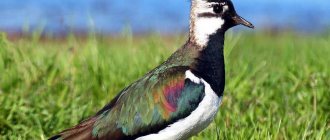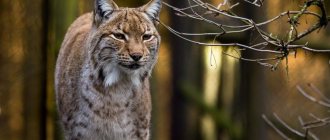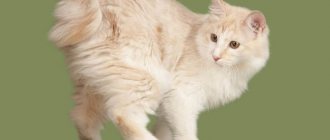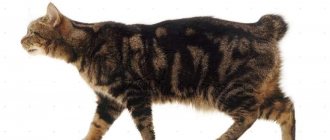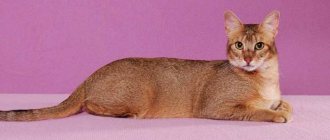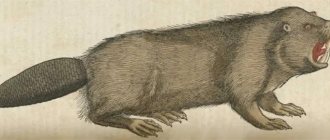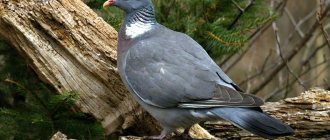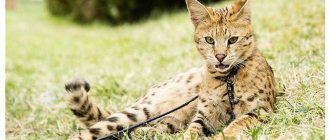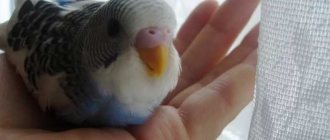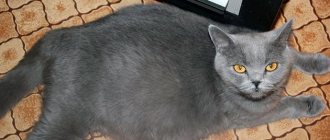Interesting facts from the life of animals
The lynx is a typical cat, about the size of an adult large dog with its tail cut off. You can meet her in the taiga or forest, but she is so careful that very few succeed.
Such a lynx is unlikely to be suitable for domestic conditions, although today there are cases where the taming of a lynx has become a completely successful event.
Domestic lynx
differs from its wild relative, as it belongs to an artificially bred breed, which was developed by crossing small wild breeds of lynx with ordinary cats of a suitable color. It is worth noting that they are still working on breeding a real domestic lynx.
Domestic lynxes have the appearance of a real Canada lynx, namely, a strong and flexible body, long legs and pronounced muscles, thick and short hair, a wide nose and almond-shaped eyes. As for the size of the domestic lynx, it is about half the size of the wild lynx that can be seen in the zoo or on TV.
Many cat lovers wonder what breeds of lynx exist that can be kept at home. Particular attention is paid to such a domestic species as the caracal.
Caracal - domestic lynx
, which can become an absolutely harmless pet, but on the condition that it will grow up in captivity from childhood under the careful care of its owners. Caracal requires special attention and special conditions for keeping.
It will be good if a spacious enclosure is built for the pet animal, where it can walk freely and sharpen its claws. To do this, you will need to choose a place for an enclosure with a growing tree or, after building it, plant a young tree.
Or build a special structure from boards.
You need to start training a caracal from childhood; caracal kittens are the best to train. If you decide to adopt an adult animal, then think a hundred times before such an important step, since an adult caracal is unlikely to become so obedient.
How to keep a lynx at home and what to feed
Lynx at home
– this is a very serious step that should be taken with full responsibility and well prepared. First of all, you need to understand that keeping a lynx at home is quite a troublesome task and requires time and money from the owners.
Not to mention that it is not difficult to buy a domestic lynx today, but quite expensive. You can feed a lynx the same way as a regular domestic cat, but you won’t be able to get by with dry food alone.
Lynx requires regular consumption of meat and fish, and the diet must also contain bones, which will provide stress on the jaw muscles.
It is worth noting that a lynx, like a cat, swallows fur when licking and often choke on it. Therefore, owners should regularly care for the cat's fur and systematically comb it.
When asked if lynx is dangerous
, it is impossible to answer unambiguously.
The wild lynx is a predator and can be dangerous to keep at home.
Expert opinion Smirnov Alexander Stanislavovich Wilderness survival instructor. More than 15 years of teaching experience
An artificially bred domestic lynx can become a very interesting, trainable and friendly pet. But still, it is not recommended to have a lynx at home where there are small children.
Although this type of cat has predatory instincts hidden deeply and is a completely harmless animal in appearance, there is no guarantee that something irreparable could happen if these instincts are awakened.
Where can I buy an exotic animal?
If you purchase a live bobcat from a nursery, an employee will likely check your living conditions. Wild lynx, as well as other large breeds, need large areas, in particular an aviary is suitable. Some of the living rare, expensive breeds can be purchased exclusively from hand. In the event that a generation can reproduce, therefore, the price will be quite high.
“Saltykovsky” is the only animal farm where you can actually buy wild lynx, located near the city of Moscow. Meanwhile, specially bred breeds are much easier to buy. Nurseries where they are bred are mainly located in large cities: Moscow, Novosibirsk, St. Petersburg, Vladivostok, etc.
The lynx-like species is easy to acquire from hand in almost any city. A certain category of people is engaged in breeding, so they will gladly sell their pupils with a pedigree and the necessary documentation.
How much does a live domestic lynx cost in Russia?
There are many species of wild cat. Let's look at the prices for the main ones.
- Red lynx, or red – 50 thousand rubles.
- Canadian – 40 thousand rubles.
- Ordinary – 100 thousand rubles.
- Pyrenean, or Spanish - it is not possible to buy legally, as it is listed in position 1 of CITES.
Meanwhile, wild species are difficult to domesticate. Thanks to crossbreeding, breeds have been developed that are characterized by a gentle disposition and good tamability. Naturally, this could not but affect the price aspect.
- Steppe lynx, or caracal – 400 thousand rubles. Due to the noticeable external similarity, this animal was classified as a lynx species, but today it belongs to a separate genus. If raised correctly, these kittens turn into playful and friendly adult pets.
- Karaket – from 850 thousand to 1 million rubles. This species was the result of mixing a domestic cat with a caracal. This is a rather peaceful, friendly breed, sometimes very independent, but not at all aggressive. A hybrid belonging to the first generation is more valued, the cost of which often exceeds 1 million rubles. By the way, the caracat is more similar to the lynx.
- Domestic lynx - from 400 thousand to 1 million rubles. These representatives are a cross between a domestic cat and a Canadian lynx. In appearance it is similar to its wild ancestor, but from the domestic cat the lynx got its active character, tenderness and love for humans.
Keeping such pets does not require a huge amount of space, and there are no risks associated with living with a wild animal. For how many rubles you can purchase such representatives, we will consider further.
- Siberian cat – from 7 to 15 thousand rubles. This little beauty was the result of a love for wild cats that lived in the Trans-Urals and oriental breeds. The thick coat is due to the harsh climate. The tassels on the ears resemble wild relatives. A characteristic feature of this breed, in addition to its complacent disposition, is attachment to only one owner.
- Norwegian forest - from 12 to 70 thousand rubles. and more. Their large size and powerful stature should not frighten you, because these Norwegian cats have a kind and reserved disposition. By the way, they are ready to get along with noisy children and with other tribesmen, for example, with dogs.
- Pixie bob – from 30 to 100 thousand rubles. This breed is quite young and rare. These cats have a canine character, are very smart, and calm. They tolerate change negatively, and without human contact they can quickly become wild.
- Maine Coon - from 20 to 80 thousand rubles. One version says that such pets were the result of mating between an ordinary cat and a North American lynx.
- Kurilian bobtail – from 15 to 70 thousand rubles. These wonderful animals were bred on the Kuril Islands. This breed is perfect for someone who is looking for a fun and smart animal.
- American bobtail – from 35 to 90 thousand rubles. This species is very loving, characterized by ingenuity and intelligence. For example, these cats will have no difficulty leaving a closed cage.
A formidable or gentle predator in the house
This graceful forest animal surprisingly easily gets used to people. But it is advisable to get a lynx at a young age. Lynx kittens are very playful and will always delight their owners with funny antics. You will need to get used to this, since these little predators can very quickly restore such “order” in the apartment that it will take a long time to clean it. Did you know that cats are friends with dogs? But, if this option is not yours, read an interesting article on how to teach a cat to be friends with a dog.
Hybrids
Caraquet
Caracats are a “kind” copy of caracals, the fruit of love between a representative of the latter and an Abyssinian cat. For a long time, breeders suffered defeats in their attempts to breed hybrid offspring capable of reproducing. Our compatriot from Krasnodar was able to succeed in this at the end of the 20th century. Thanks to her, this mixture of cat and steppe lynx combines wild beauty and gentle disposition.
The conformation of this new breed of lynx-like cat is identical to the caracal: the same body size, coat color, long hind legs and ear tufts. However, their character is much calmer and more peaceful than that of their wild ancestors. They love to play and get along well with their pet neighbors.
Caracats are easy to train to walk in a harness. They also need a well-equipped playground that satisfies their wild instincts.
Domestic lynx
Thanks to the efforts of breeders, crossing the Canadian lynx with domesticated cats with spotted skins gives us the opportunity to have a real lynx, only a domestic one. She has the same long hind legs, shortened tail, graceful curve of the spine, expressive almond-shaped eyes and “signature” ear tufts.
Individuals of the domestic lynx have thick gray-brown fur. Lynxes are incredibly beautiful, their fur has a gray-blue tint - it seems as if they have just rolled out in the snow.
Such a luxurious fur coat requires constant and thorough combing. Otherwise, the animal runs the risk of choking when licking
In general, caring for a domestic cat-lynx hybrid is identical to caring for a caracal or caraquet - a lot of movement, raw meat and constant attention
Caracal
The caracal is very similar in appearance to the lynx, but is slightly smaller in size. Just like the lynx, the caracal has dense, thick fur, lush dark tufts on the tips of the ears, and coarse bristly hair on the paws. It has a uniform red color with a whitish lower part. Melissas are rarely found - individuals with black coat color.
The caracal is a predatory animal, the original purpose of domestication was to help in hunting. Nowadays this exotic animal is purchased as a pet. Caracals are balanced and energetic. They are characterized by a love of games and affection, and curiosity.
The price varies from 400 to 500 thousand rubles.
You need to buy a pet at the age of 4-6 years and only in specialized nurseries.
If you buy at the market or on the Internet, there is a chance that you will purchase an animal that was caught in the wild and not accustomed to home conditions.
Such individuals are predatory and do not live at home.
Caracal
Grace and grace of the lynx
In nature, the lynx is a separate population of mammals, which in appearance is most similar to the cat population itself. Its dimensions do not exceed those of a large dog, which it slightly resembles with a short body and long legs. Lynxes are great at climbing rocks and trees. Its elongated hind legs, overgrown with hair in winter, help the animal to grip well on loose snow. A rather short tail does not prevent the lynx from moving through trees and mountains in the forest.
Lynxes live in the forests of central Russia, some European countries, the USA, Canada, Central Asia, as well as in the Scandinavian countries. The body length can reach up to 1.30 m, the height at the withers can be up to 0.7 m, and the weight varies from 5 to 30 kg. The coloring of these predators is quite varied: red, brown, smoky, etc. Characteristic features of the lynx: elongated hind legs, a small tail, and specific tufts on the ears.
What does the price depend on?
The cost of any animal, especially exotic and large ones, is always high. When it comes to lynx, its final price is influenced by several important factors:
- place of purchase - from breeders who monitor the health, nutrition, purity of the blood of their inhabitants, the price will always be much more expensive than if you buy an animal from your own hands;
- age of the individual - small “kittens” are valued a little less than already grown, fed lynxes for 2-3 months;
- belonging to a species - individuals with typical species characteristics are more valuable than crossed varieties;
- uniqueness - lynxes with unusual appearance features are more expensive.
Domestic lynx and its features
The domestic lynx is also an artificial breed. She was bred by crossing a domestic cat with a Canadian wild cat. As in the case of the caraquet, breeding work regarding the domestic lynx continues to this day.
Breeders strive to ensure that the animals are healthy and visually attractive, and that such domestic lynxes can be kept at home.
The domestic lynx cat is a rare and difficult breed to reproduce. Accordingly, it is also expensive. Such a high price is due to complex breeding work. For the result to be successful, breeders need a lot of time. These cats should look like a real wild lynx, but at the same time have a gentle character, like a pet.
Domestic lynxes are very good-natured. Their key external features are as follows:
- the physique is strong, the skeleton is well developed;
- the body has a rectangular shape, the back is arched;
- the tail is short and mobile;
- limbs are oblong;
- wide nose;
- the head is triangular, cheekbones are raised;
- almond-shaped eyes;
- The coat is short and thick.
Domestic lynx are incredibly similar to wild ones, but domestic pets are smaller in size. This is a consequence of the fact that Canadian lynxes, which are recognized as the smallest species of these wild animals, participated in the selection.
Features of caring for a domestic lynx or caraquet
Despite the fact that these breeds are called domestic, we must not forget that the blood of wild predators flows in their veins. It is strictly forbidden to feed such a pet dry store-bought food. These cats constantly need fresh meat in large quantities, and in order to give exercise to their developed jaws, they should be given sinews and bones. Nutrition should be balanced. These pets are constantly moving and incredibly active, so provide them with space to do this.
For preventive purposes, to prevent an animal from swallowing fur, it should be combed regularly and sometimes give pets products to prevent the accumulation of hairballs in the internal organs. Be sure to provide your pet with the following:
- active games;
- walks;
- bathing.
What to feed a lynx?
You need to feed the lynx correctly. A large individual eats four hundred grams of raw meat at a time. And you need to feed your spotted pet twice a day. In addition to meat, the lynx happily eats dry food and canned fish. But you need to gradually accustom your predator to canned food. In addition, it is imperative to add various vitamins, as well as minerals and calcium to your food. Well, find out what to feed another predator, the ocelot, in this article.
Cat breeds that are similar to wild relatives - list, photos and characteristics
Having wild cats such as lynx, leopard, puma or tiger as a pet is not a good idea, but throughout history people have tried to domesticate servals, caracals, fishing cats, ocelots, cheetahs and even lions. The desire to own a wild animal can have very negative consequences, so breeders have used their skills to breed cat breeds that are similar to wild ones, but at the same time safe for their owners.
From the striking Bengal to the unusual Savannah, meet our selection of ten cat breeds that have only wild looks, but not character.
Abyssinian cat
Due to its unique ticked coat color, the Abyssinian cat is very similar to African wild cats. Ticking is alternating light and dark patches on each hair shaft. In addition to their beautiful fur coat, representatives of this breed stand out for their playfulness, high level of intelligence and energetic nature.
Bengal cat
Do you want a breed with the appearance of a leopard and the demeanor of a house cat? Then, without a doubt, get a Bengal cat, bred by crossing domestic and wild Bengal cats. Bengals have stunning coat colors that come in a variety of vibrant patterns: rosettes, spots, or even merle patterns (where one or more colors are mixed into the base coat color).
Bombay
If you do not take into account the calm, patient and friendly nature of the Bombay, you might think that he is a miniature copy of the black panther. The breed's exotic appearance was achieved by crossing a sable Burmese cat with a black American Shorthair, earning it the nickname "the patent leather baby with the new penny eyes."
Egyptian Mau
Egyptian Mau cats can run at speeds of up to 50 km per hour, making it difficult for them to sit still long enough for you to notice their natural spotted coloring and exotic markings around the eyes. Researchers believe the breed originated in Egypt at least 3,000 years ago, and likely descended from African wild cats.
Somali cat
Descended from the Abyssinian cat, the longhaired Somali also has the appearance of an African wild cat and, thanks to its bushy tail, can be mistaken for a fox. Like their related shorthaired Abyssinians, Somali cats are also intelligent, curious and very active animals. If you are looking for a calm cat for your lap, then the Somali breed is not for you.
Housey
This is a relatively young cat breed that was created by crossing a domestic cat with a wild jungle cat (Felis chaus). They can grow to almost a meter in length and weigh 4-7 kilograms or more. As with other hybrid Savannah or Bengal cats, male Housies from the first few generations are usually sterile, with the F4 and F5 generations considered the most suitable for showing.
Domestic lynx cats
Today, there are several cat breeds that have characteristic “lynx” appearance features, but at the same time are quite different from each other. Some of them were bred after crossing domestic cats with wild ones, while others have no family ties with wild ancestors at all.
Caracal
This is one of the lynx breeds, which is distinguished by its large build. It descended from wild caracals, predatory mammals of the lynx family. Unlike their wild relatives, domesticated caracals are slightly smaller: the height at the withers can reach 50 cm, and the weight can be 11-19 kg, but they still have long tufts on their ears, short thick hair with white and black markings.
Important! The basis of the caracal's diet is meat. An adult pet sometimes eats up to 1 kg of this product per day.
To get a caracal kitten you will have to pay at least 400 thousand rubles.
Caraquet
This is a kind of smaller copy of a caracal, also with tassels on the ears, but with a softer and more affectionate character, which was obtained by crossing an Abyssinian cat and a caracal. The first Caraquet kitten was born in 2007. Representatives of the breed have a small muzzle, black ears and beautiful fur. Due to their muscular build, they are able to jump well in height, and thanks to the genes of their ancestors, they received endurance, developed hearing and a strong digestive system capable of digesting heavy food. At the moment, this is a very small breed, so it is one of the most expensive in the world.
The price of carakets is from 800 thousand rubles.
Pixie bob
This is the most common breed and can be considered a true but smaller copy of the lynx. It appeared in North America through crossing domestic cats with their forest relatives. The result is an animal with the character traits of a calm pet and the appearance of a predator: the pixie-bob has tufted ears, spotted fur and a short tail. It is to the latter that the pixie-bob owes its name, which translated means “short-tailed elf.”
On a note! Pixie-bobs are easy to care for, and their habits resemble those of a dog: sometimes they don’t mind walking on a leash and training.
Depending on the gender and pedigree, a pixie-bob kitten will cost 20-80 thousand rubles.
Maine Coon
This American breed was not bred artificially, but appeared in Maine as a result of natural selection. Its name, which translated means “raccoon from Maine,” is associated with its place of origin.
Many people see in Maine Coons similarities with lynxes: the obligatory tufts on the ears, a large body and a wide head, but they are distinguished from lynxes by the presence of a long fluffy tail. The Maine Coon is considered one of the largest domestic cats: the weight of adult pets sometimes reaches 12-13 kg. Despite their impressive dimensions, these are quite graceful and affectionate pets.
Prices for Maine Coons start from 10 thousand rubles. and can reach up to 80 thousand rubles. for animals from breeding nurseries.
- Caracal - a big cat for exotic lovers
- Caraquet
- Maine Coon
How does a lynx reproduce?
Pets of different sexes reach sexual maturity at different times. Female - 1-1.9 years, male - from 1.5 to 2.9 years. The mating period for the common lynx is from January to March, for the red and Canadian lynx - from February to June. The mating of the female and male is accompanied by a loud cry. Fights often occur between males. A pair of lynxes, having given preference to each other, gently rub their foreheads.
The gestation period lasts from 63 to 74 days. Small lynx cubs are born, as a rule, in late spring or early summer.
A lynx's refuge is a den under the roots of an upturned tree, a low hollow, a cave, rock crevices, a hole or a windfall. In any of these places, the female prepares the nest, lining the bottom with animal hair. In one litter there are from 1 to 6 babies, but mostly 2 little lynxes are born.
Newborn lynxes weigh 245-300 grams. Animals are born helpless: blind and deaf. Eyes open on the 12th day. A month later, the female begins to feed the cubs solid food.
History of the origin of the domestic lynx
The word "caracal" comes from the Turkish "karakulak", which means "black ears". Initially, the animal was tamed by the poor for the purpose of catching game. Centuries ago it was called the poor man's cheetah. Later, the acquisition of such an animal became, on the contrary, a sign of wealth.
Wild caracals live in Africa and Central Asia. Previously, they were classified as lynxes, but after genetic differences were identified, caracals were assigned to a separate genus. In captivity, the caracal is often crossed with the serval, so there are not many purebred animals.
Currently, scientists are working to improve the breed. This will reduce the aggressiveness of pets and make them more suitable for living in the house.
This is interesting: The most famous cat breeds - we present them in order
Human interaction
Living under the same roof with a wild cat is not as rosy as it might seem. If you buy an animal small and gradually accustom it to yourself, there will be no problems with its maintenance in the future. Often older individuals, when they get close to a person, show their aggression, damage furniture, and do not allow people to approach them.
In any case, the house where the lynx will live will have to be renovated: remove expensive wooden furniture, get rid of carpets, cover the floor with tiles, instead of a single entrance door, make a double one - so that the animal does not run away.
Even an ordinary cat can scratch something or chew on your favorite table. The lynx will do the same thing, only more noticeably. You can’t do without the negative side, so either ignore it and enjoy your pet, or get someone calmer.
